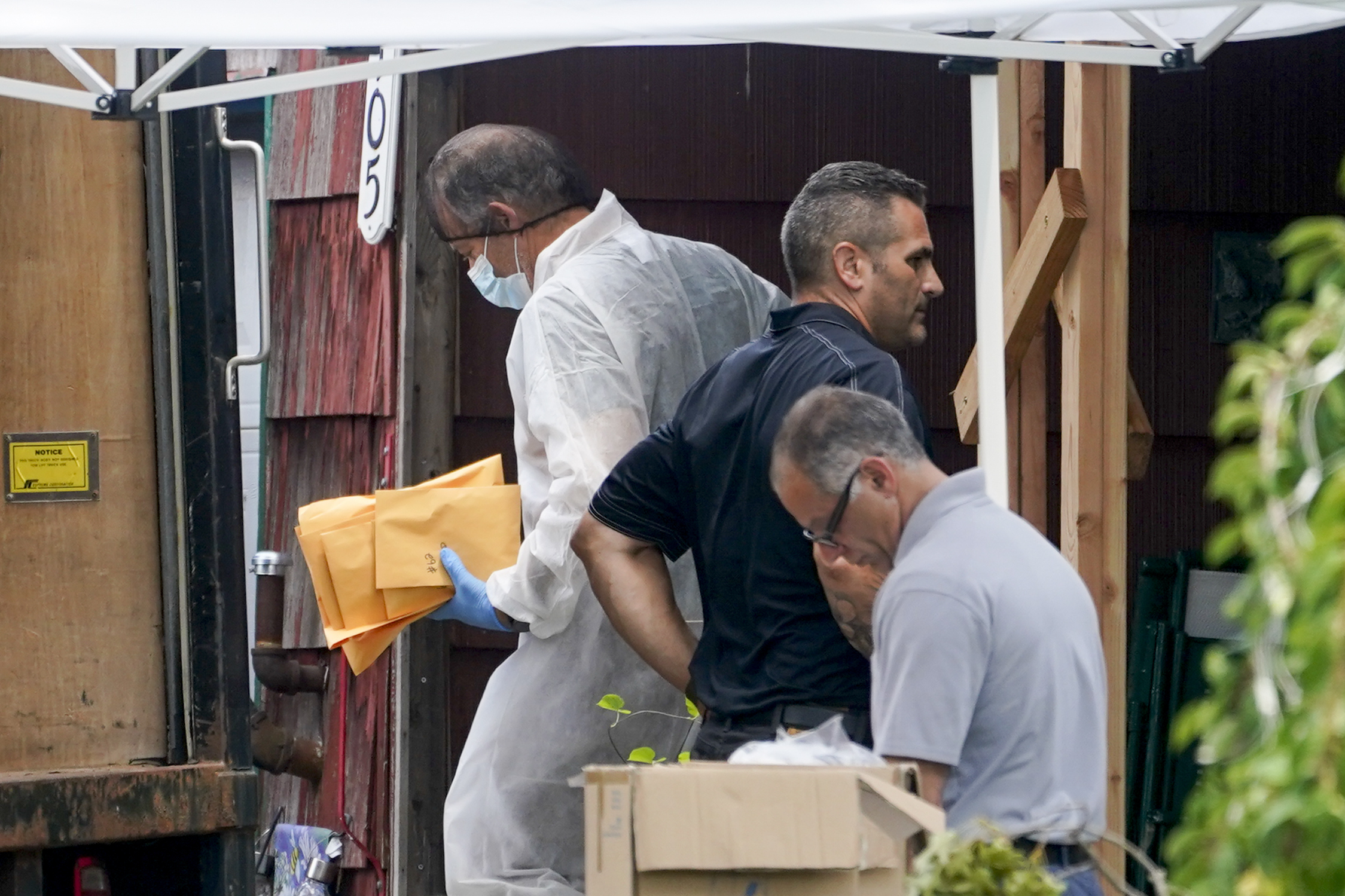What to Know
- Karen Vergata was identified as "Jane Doe #7" or "Fire Island Jane Doe" in the Gilgo Beach murders investigation
- Vergata was 34 years old when she disappeared in Feb. 1996, and had been living on West 45th Street in Manhattan; it is believed she was working as an escort at the time
- Prosecutors said that body parts belonging to Vergata were discovered in two different locations years apart: In April of 1996, her legs and feet were found on Fire Island, and her skull was found in 2011 near Tobay Beach
Law enforcement on Long Island announced Friday that they have identified another victim in the infamous Gilgo Beach murders.
The victim, previously known as "Jane Doe #7" or "Fire Island Jane Doe," was identified as Karen Vergata, Suffolk County District Attorney Ray Tierney said at a press conference Friday morning. Vergata was 34 years old when she disappeared in 1996.
Vergata initially went missing on Feb. 14, 1996, Tierney said, adding that she lived on West 45th Street in Manhattan at the time of her disappearance. It is believed that she was working as an escort. There was no missing person report filed when she vanished, according to Tierney.
Prosecutors said that body parts belonging to Vergata were discovered in two different locations years apart: In April of 1996, her legs and feet were found on Fire Island, and her skull was found in 2011 near Tobay Beach. The latter discovery was made around the same time that nine other bodies were found in the remote stretch of beach.
Get Tri-state area news delivered to your inbox. Sign up for NBC New York's News Headlines newsletter.
It took more than a decade for FBI investigators to identify Vergata, with the help of some DNA work.
"In August of 2022, approximately six months after we formed this Gilgo task force, a DNA profile suitable for genealogical comparison was developed from the remains of Karen Vergata," Tierney said. "In September of 2022, the FBI was able via a genetic genealogy review, to identify Ms. Vergata presumptively as 'Fire Island Jane Doe.'"
A month later she was definitively identified using a swab from the inside of a relative's cheek, confirming her identity. Her family members were then contacted.
Tierney clarified that no charges associated with Vergata's death and disappearance have been filed, nor did he give any details as to how or why Vergata was killed. He said the DA's office won't have any comment regarding any possible suspects. An investigation is ongoing.
There are three other Gilgo Beach victims who still remain unidentified: a man, a woman and a young child. A prior Suffolk County DA previously said that he believed there was more than one possible killer, though Tierney has not said anything along those lines.
The announcement came as prosecutors work to strengthen their case using DNA from suspect Rex Heuerman. They now want a DNA sample directly from the 59-year-old architect. Tierney would not answer questions regarding if Heuermann may have been involved in the death of Vergata.
Investigators have requested a cheek swab from the man charged with killing Melissa Barthelemy, Megan Waterman and Amber Lynn Costello, who disappeared over a 14-month span prior to the discovery of their bodies.
Prosecutors say Heuermann is also the prime suspect in the death of a fourth woman, Maureen Brainard-Barnes, who vanished in 2007. Her remains were found in the same quarter-mile stretch of Ocean Parkway as the other women, across a bay from the town where Heuermann grew up and lived for decades in his childhood home.
According to a motion filed by the district attorney's office, the sample would "provide further relevant evidence of the defendant's identity as the perpetrator of the crime."
DNA played a key role in Heuermann's arrest. Prosecutors have said hair found at the crime scene matches DNA from a pizza box the suspect threw into a trash can in Manhattan.
He pleaded not guilty at his first court appearance and was ordered jailed without the possibility of bail. His lawyer said Heuermann denied committing the crimes.
“The press has convicted my client without seeing a shred of evidence,” Michael Brown told reporters after the hearing, suggesting that prosecutors "very well could have the wrong guy.”
Heuermann is due back in court on Sept. 27.
All of the women Heuermann is accused of killing were sex workers whose remains were discovered near each other. Investigators say they cracked the case with the help of sophisticated cell phone location data analysis, DNA evidence and an old tip about a vehicle seen parked outside the home of one of the victims.
Investigators spent nearly two weeks combing through Heuermann’s home in Massapequa Park, across a bay from where the remains were found, yielding yet more evidence that will eventually be turned over to his lawyer.
The search included digging up the yard, dismantling a porch and a greenhouse and removing many contents of the house for testing.
Robert Macedonio, an attorney for Heuermann’s wife, Asa Ellerup, said the home was essentially “destroyed” along the way, with investigators cutting through the bathtub, ripping up floors, and leaving cat litter strewn around the house.
Ellerup filed for divorce after her husband was arrested. She and her two adult children, who also live at the house, returned last week after bouncing between relatives’ homes and a rental car, where they were forced to spend multiple nights, according to the lawyer.
“These people are also innocent victims in this,” Macedonio added. “They’re the unknown victims because no one cares about them.”
An attorney for the adult children, Vess Mitev, said his clients were considering legal action against police for the “deplorable and roughshod handling of the investigation.”




